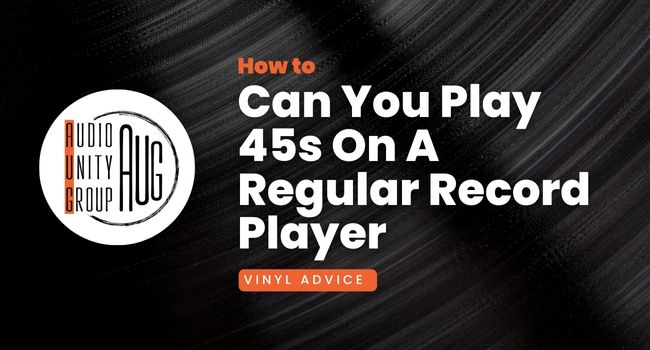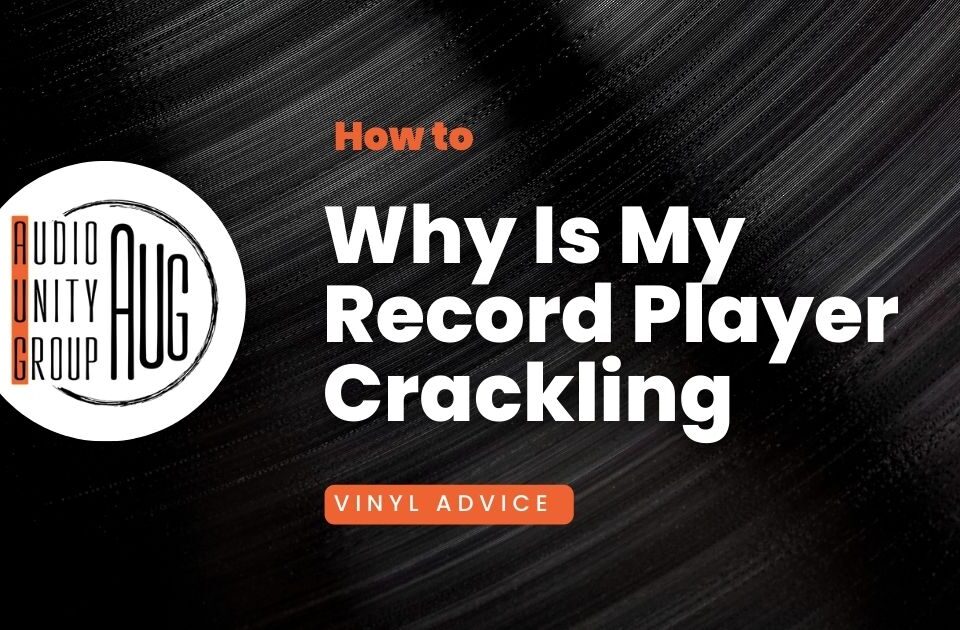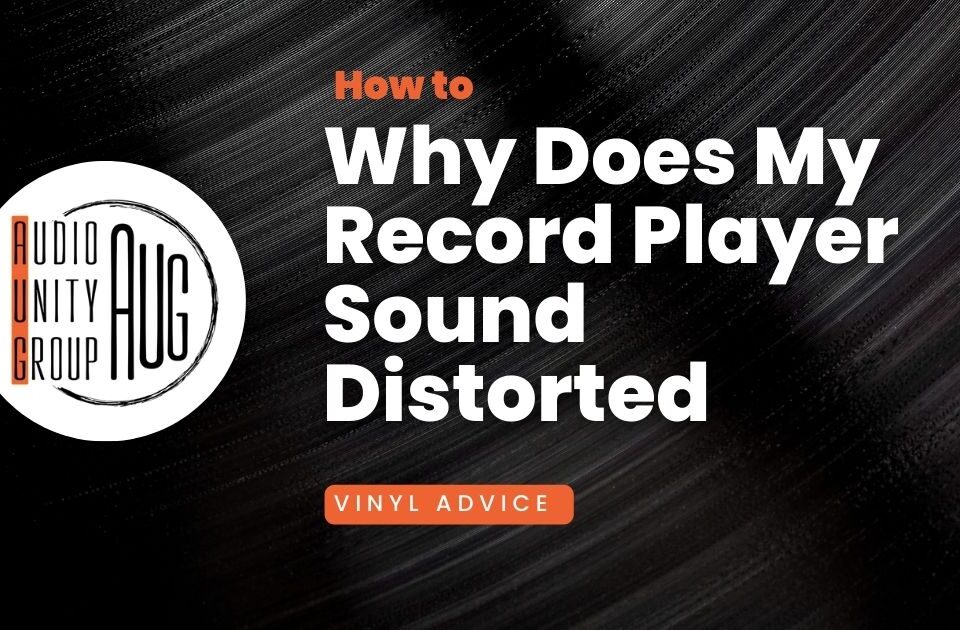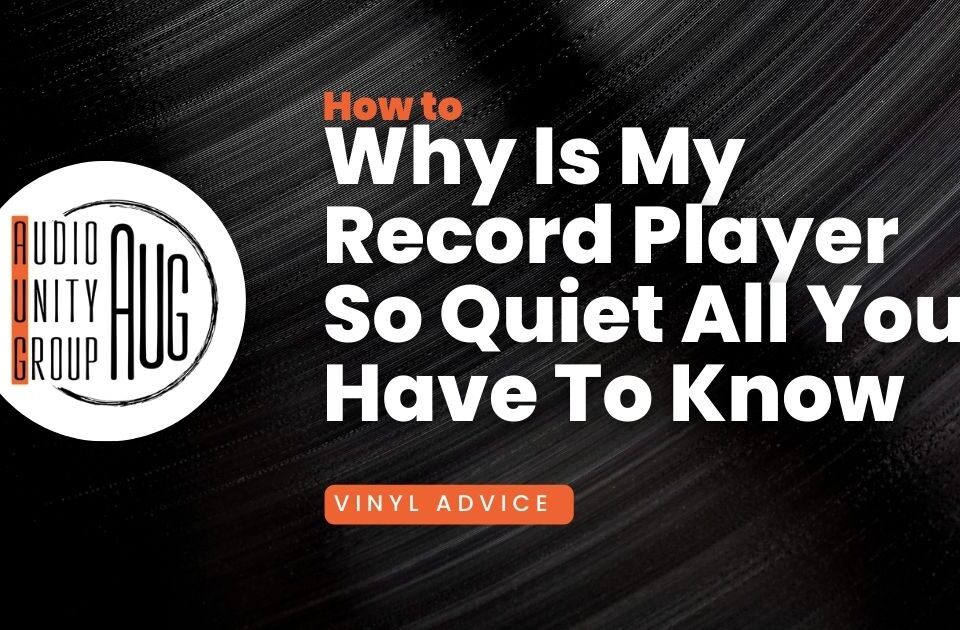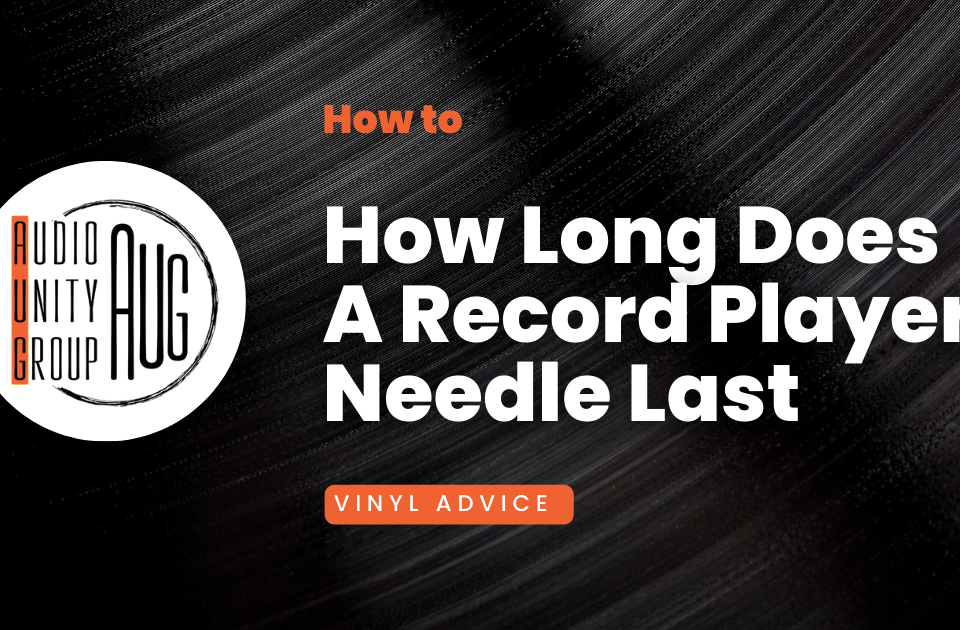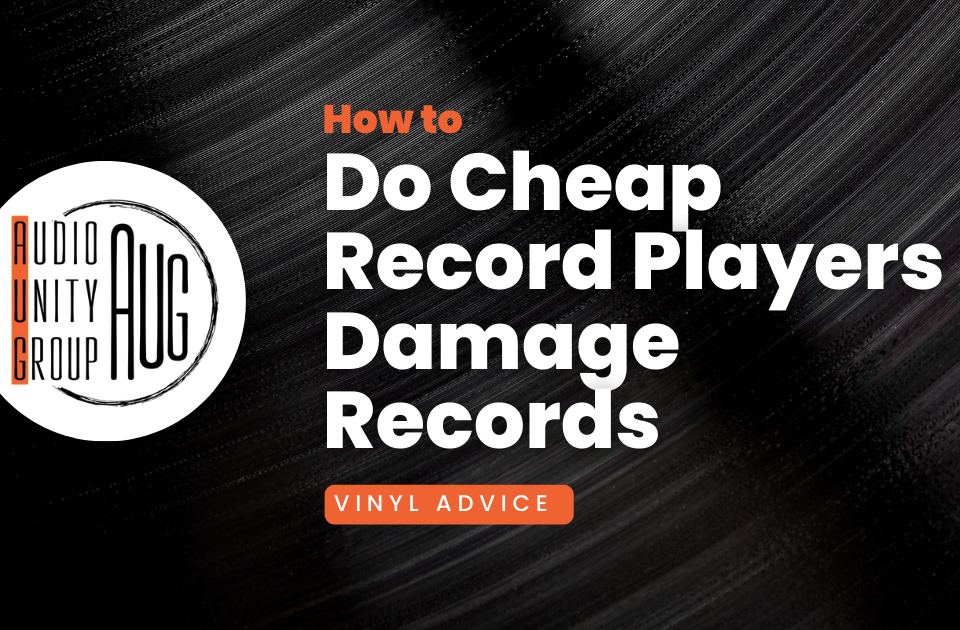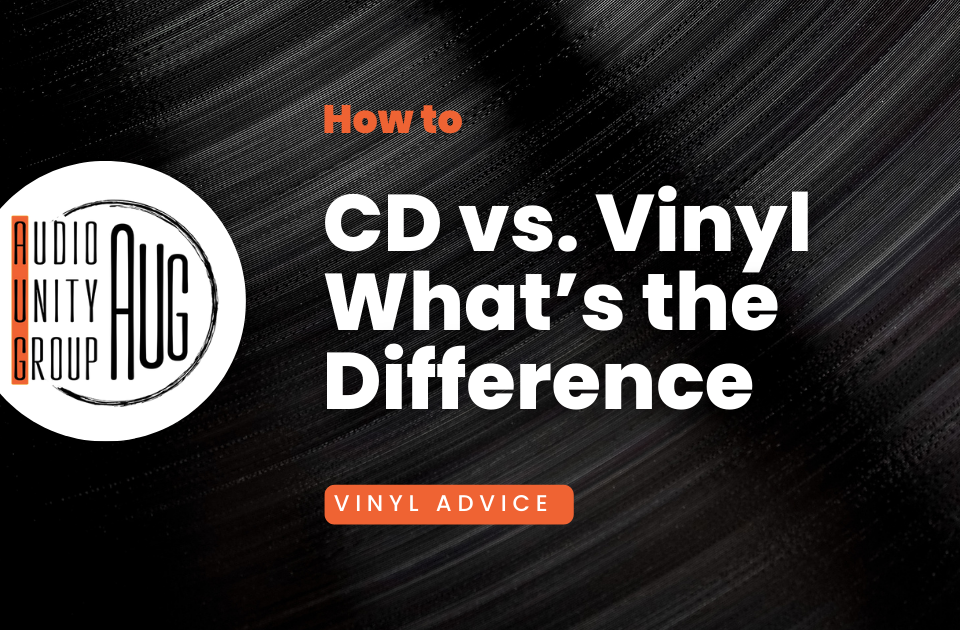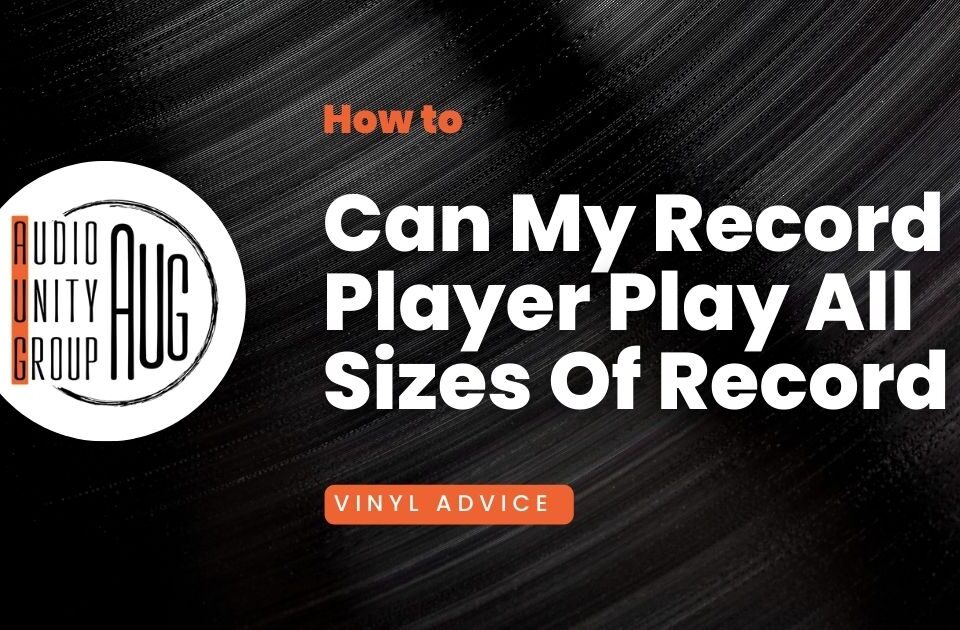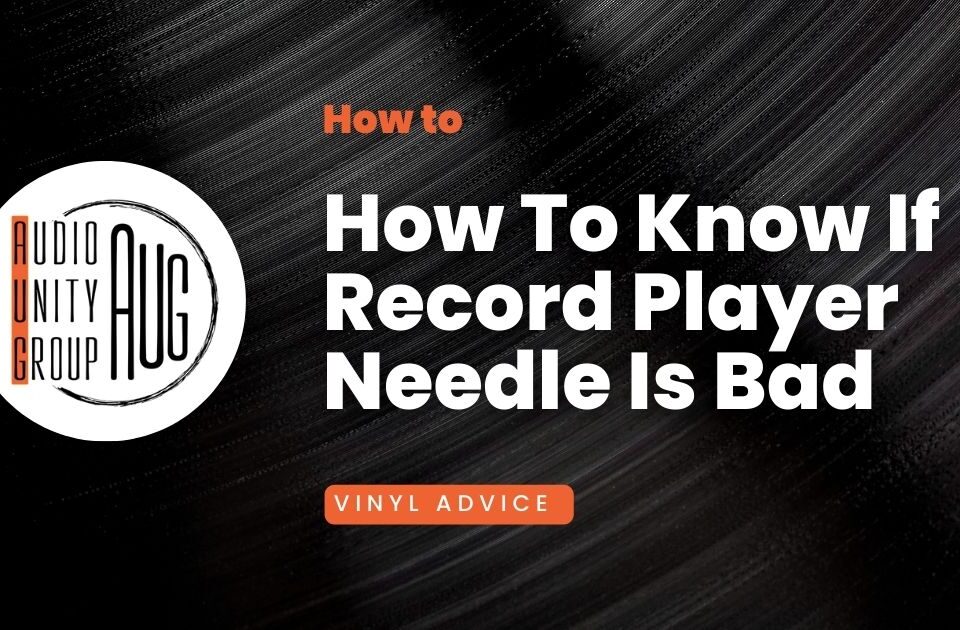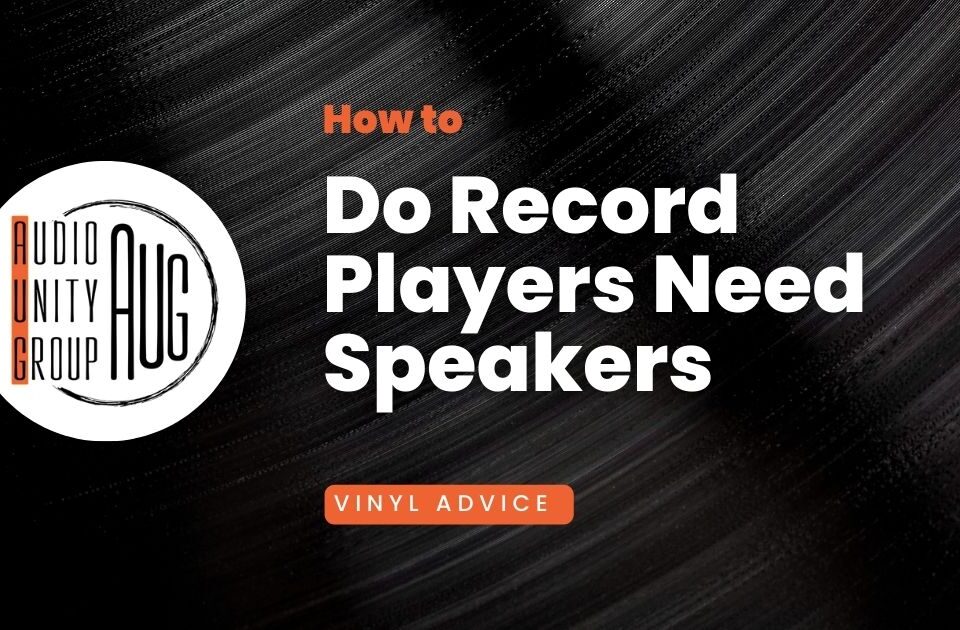
Can You Bring A Record Player On A Plane
March 22, 2023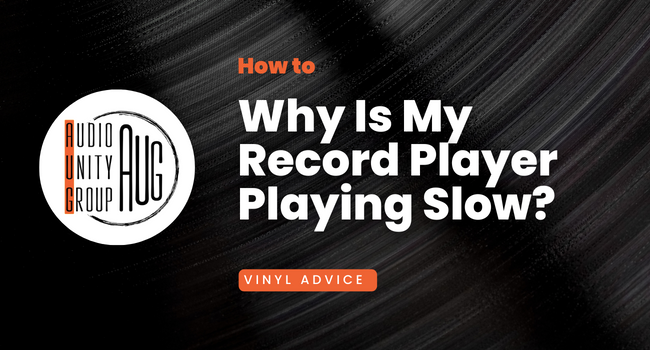
Why Is My Record Player Playing Slow? Common Causes And Fixes
April 3, 2023Last Updated on March 22, 2023 by Tom S. Ray
Can You Play 45s On A Regular Record Player
Have you ever wondered if it’s possible to play 45s on a regular record player? Well, the answer is yes! With just a few adjustments, playing your favorite 45 singles doesn’t have to be a problem. In this article, we’ll discuss what makes 45s different from other records and how they can be played with any type of record player. Keep reading to learn more about playing 45s on a regular turntable.
The first thing that sets 45s apart from other vinyl records is their size. They measure seven inches across compared to twelve inches for albums and ten inches for 78rpm discs. This means that they require specialized playback equipment in order to work properly – something most standard record players don’t offer. But don’t worry; there are still ways to make them playable using conventional technology.
Finally, we’ll look at how even those without access to special tools or accessories can enjoy their collection of old school singles. From investing in an adapter kit to improvising with everyday objects, there are plenty of options out there for anyone looking to get the nostalgic sound of classic 45s spinning on their turntable. So let’s dive into all the details so you can start enjoying your favorite tunes again!
Table of Contents

Understanding 45s Records
45s records are a type of vinyl record that is smaller than the standard LP. It has a large hole in the middle, different from an LP’s small one. 45s have become popular due to their size and portability; they can be easily carried around or stored away without taking up too much space. They typically feature two songs, with each side having its own track. This makes them perfect for jukeboxes or radio stations looking to play only certain tracks on air. The sound quality is usually not as good as LPs but still offers decent audio fidelity overall. In addition, there are various speed options available depending on the genre of music being played. With all these features combined together, it’s easy to see why 45s remain so popular even today.
Different Types Of Record Players
There are two main types of record players: 45s and regular. 45s, or 7-inch records, generally play singles or extended plays (EPs). Regular record players usually spin 12-inch LPs that contain full albums. Both types use a stylus which is attached to the tonearm, allowing it to make contact with the grooves on the record as it spins.
When choosing between these two options for playing music, one needs to consider their technical specifications. The speed at which they rotate varies; most 45s players have a rotating speed of either 33 1/3 rpm or 45 rpm while regular player speeds can range from 16 2/3 rpm up to 78 rpm. Additionally, the wattage output may vary depending on the model – some models provide higher power outputs than others.
It’s important to note that both types of record players can be used in conjunction with other audio systems such as amplifiers and speakers. This allows users to enjoy high fidelity sound quality without compromising on convenience or portability. With this in mind, let’s take a look at the technical considerations when using a record player.

Technical Considerations
Yes, you can play 45s on a regular record player. To do so, however, you’ll need a 45 RPM adapter for the turntable spindle and an additional stylus needle that is compatible with the size of records being played. You will also want to make sure the speed settings are set correctly in order to ensure accurate playback.
When playing 45s on a regular record player, it’s important to keep track of which type of stylus was used and any other adapters or accessories that were added. Doing this will help prevent damage to your vinyl as well as prolong its life span. Additionally, using the proper cleaning supplies can help protect against dust build-up and static electricity that could cause further damage.
These technical considerations should be taken into account when playing 45s on a regular record player. With these tips in mind, now we can look at some different types of adapters and accessories available that can provide even more options for listening pleasure.
Adapters And Accessories
Yes, you can play 45s on a regular record player. To do so, however, it’s necessary to have the right accessories and adapters. Firstly, you’ll need an adapter that fits 45 records onto your turntable’s spindle. This will allow the arm of your record player to be able to lift up and down without damaging the disc or slipping off during playback. Secondly, if you’re playing a lot of 45s then it might also be worth investing in a special stylus for use with these discs as they often require more pressure than standard 78 rpm vinyl albums. Finally, some record players may not come with all the relevant attachments needed to make them suitable for playing 45s; such as a speed selector switch or variable pitch control knob. If this is the case, it’ll be necessary to purchase these separately before attempting to spin any singles at home. Onward from here we look into what speeds to play 45s on a regular player.
Speeds To Play 45s On A Regular Player
With the right adapter, it is possible to play 45s on a regular record player. However, it’s important to ensure that you are playing the records at the correct speed. If not, it will sound garbled and distorted. To begin with, check your turntable’s manual for instructions on setting up the speed control to play a 45 rpm record. Generally speaking, there should be two settings: 33 1/3 and 45. If there isn’t then consult an expert or contact the manufacturer of the device and ask how to adjust the speed correctly.
Next, place the tonearm so that its stylus rests above the label in the center of your 45 record before switching on your turntable. Slowly lower down your tonearm until its stylus enters into grooves of your vinyl disc – make sure not to move suddenly as this can cause scratches! Once you have done this, press start or gently turn anti-clockwise if using a manual turntable; you should now hear music being played out loud from your speakers at optimal speed. Lastly, if necessary, adjust both bass and treble levels via tone arm controls for maximum clarity and volume when listening to songs through headphones or speakers connected with your record player. With these steps completed properly, transitioning between 33 1/3 and 45 speeds is easy – just remember to take care when handling delicate records! Adjusting the tone arm further can provide even better audio quality when spinning classic vinyl discs.

Adjusting The Tone Arm
Adjusting the tone arm is an important step when playing 45s on a regular record player. The first thing to check is that the tone arm counterweight is properly set according to the manufacturer’s specifications. This will ensure that the needle isn’t too heavy or light for your record; if it is, you won’t get the best sound quality from your records. Once the counterweight is adjusted correctly, make sure to adjust the tracking force so that it matches what’s recommended by the cartridge manufacturer. This ensures that your needle doesn’t skip during playback and provides optimal audio clarity. Finally, make sure to also adjust the anti-skate setting accordingly; this helps prevent mistracking at higher volumes, which could damage your records over time. With all these settings in place, you’ll be ready to select the proper needle for your record player and enjoy high-quality music with minimal effort.
Selecting The Proper Needle
Now that the tone arm is adjusted, selecting the proper needle for your record player is an important step in playing 45s. Needles come in a variety of shapes and sizes to fit different types of cartridges and records. Here are some tips on how to select the right one for your needs:
- Shapes
- Conical – This type of needle has a narrow tip with a more gradual taper from wide to narrow along its length. It fits most standard cartridge headshells and works best with 7-inch singles and 12-inch albums.
- Elliptical – An elliptical needle offers superior sound quality due to its sharper, narrower tip shape which can better track grooves than conical needles. It’s designed for higher end models or those looking to get maximum performance out of their system.
- Spherical – A spherical shaped stylus looks like a small ball at the end of the cantilever (the metal rod connecting it to the cartridge). Its rounder surface makes it great for tracking warped records or when there’s lots of dust present as it will reduce skipping.
- Size
- 0.7 mil – Smaller sized needles work well with lighter material such as 45 RPM singles since they don’t put too much pressure on them resulting in less wear over time. They also tend to have lower output levels so you may need to adjust your settings accordingly if using this size.
- 1 mil – The most common size used by both budget turntables and audiophile systems alike, this is what you should use if unsure about which size would be best for your setup.
- 1.5 mil – Larger needles are suitable for heavier material such as 33 RPM albums and 78 RPM discs but could cause excessive wear on lightweight vinyl like 45s so avoid them unless absolutely necessary.
- Material
- Diamond – By far the most popular choice among DJs and collectors, diamond tipped needles offer superior audio reproduction thanks to their precise edge that won’t degrade quickly like other materials like sapphire or boron do over time.
- Sapphire / Boron – Both these materials provide decent sound quality while being cheaper than diamonds making them ideal options if you don’t want to invest too much money into replacing worn out needles often within short periods of time .
It’s important not only to pick the right size and shape, but also take into account the weight rating indicated on each needle package before purchasing one; this will ensure it matches up correctly with your specific cartridge headshell model without causing any issues down the road. With all these factors considered, troubleshooting potential problems related to sound quality during playback becomes easier when everything is properly set up beforehand!
Troubleshooting Tips
The first step in troubleshooting is to check the needles. The needle should be specifically designed for playing 45s, which will have a wider groove than regular needles. If you’re not sure what type of needle your record player has, it’s best to take a look at the manual or contact the manufacturer.
Next, make sure that the speed selector on your record player is set correctly. Most standard players use 33 and 45 RPM speeds, so if you’re trying to play a 45 rpm single, make sure that it’s set to 45 before placing the disc onto the turntable.
Lastly, consider adjusting the weight on your tone arm. When playing back records with a large center hole such as 45s, there needs to be more downward pressure applied by the tonearm so that it can reach into the grooves of vinyl properly. By slightly increasing the weight applied by your tone arm, this may help ensure that your discs are able to track properly and produce quality sound output.
Alternatives To Playing 45s On A Regular Player
Playing 45s on a regular record player is not always possible. Fortunately, there are alternatives to playing them on the same type of device. Here’s an overview:
| Options | Description |
|---|---|
| Turntable with speed control | A turntable with adjustable speeds can be used to play both 33 1/3 and 45 RPM records. This is likely the most convenient option for those that want to use their existing record players |
| USB Turntable Adapter | An adapter cable allows you to hook up your turntable directly to your computer via USB. This makes it easier than ever before to convert vinyl records into digital audio files in just minutes. It also provides access to a wide range of online music streaming services. |
| Dedicated Record Players | There are some dedicated record players designed specifically for playing 45s. These devices typically have larger tonearms and higher torque motors so they can handle heavier loads without skipping or distorting sound quality. They may even come with built-in speakers or headphone jacks so you can listen anywhere! |
No matter which alternative you choose, make sure you take the time to do some research and find one that will work best for your needs. With any luck, this should help improve your listening experience when it comes to playing 45s on a regular record player. Moving forward, maintenance and care will be key if you want these options to last as long as possible.
Maintenance And Care
Moving on, proper maintenance and care of a regular record player is essential for optimal sound quality. Firstly, keep the needle clean with an alcohol-dampened cotton swab; this will help to prevent dust from accumulating in the grooves and potentially scratching the records. Secondly, it’s important to make sure that your stylus pressure is set correctly – too much or too little can cause premature wear and tear on both your 45s and regular LPs. And lastly, you should periodically check all connections inside the turntable to ensure they are secure. This includes checking if any wires have come loose as well as ensuring that there is no dirt or dust buildup which may be negatively impacting sound quality. Taking these steps will go a long way towards helping you get the most out of your record player when playing 45s or other types of vinyl.
Frequently Asked Questions
Are 45s Records Still Available?
Yes, 45s records are still available. They offer a unique sound that some record players can play and enjoy. But why should you consider buying them? Let’s take a look at the benefits of 45s records:
- Benefits:
- Quality:
- 45s records have improved audio quality than other formats like CDs or cassette tapes. This is due to their larger size, which allows for more detailed soundwaves to be captured in each track.
- Variety:
- You’ll find an expansive variety of genres on vinyl, including jazz, rock, hip hop and much more. With so many options available, you’re sure to find something interesting no matter your musical taste.
If you’re looking for classic sounds from decades past, then 45s records may be just what you need. Not only do they provide high-quality playback with superior sound fidelity but also allow listeners to discover new music without having to search too hard. Moreover, these records come in all kinds of shapes and sizes making them both visually appealing and fun to collect!
For those wondering if it’s worth the effort to buy a special record player just for playing 45s — the answer is definitely yes! Not only will it add character to any room but also give access to timeless classics that won’t be found anywhere else. Plus, there’s nothing quite like being able to hear every note as it was meant to be heard when spinning one of these gems!
In short, 45s records are still readily accessible today and offer great value for anyone wanting an authentic listening experience or simply wants access to rare tunes not found elsewhere. So don’t miss out – check out what’s available online today!
How Much Does A Record Player Cost?
When it comes to record players, the cost can vary. For those looking for a more basic model, a quality record player may be available for around $50-$100. However, if you’re looking for something more advanced with features like automatic speed adjustment and built-in speakers, you could expect the price to go up into the hundreds of dollars.
If budget is an issue but sound quality still matters, there are options available that come in at lower prices while still offering good audio performance. Many vintage models can provide excellent sound quality and are often quite affordable since they don’t have all the bells and whistles as modern versions do.
No matter what type of music you’re interested in listening to or your budget constraints, there’s sure to be an option out there that meets your needs when it comes to buying a record player. You just need to take some time researching different models so you can find one that best fits your requirements and fits within your budget range.
How Do I Clean My Records?
Cleaning your records is an important step to maintain their quality and make sure the sound coming from them remains optimal. It can seem like a daunting task but with a few simple steps, you can keep your vinyl collection in top condition:
1) Start by brushing any dust off the record using a carbon fibre brush or antistatic gun.
2) Put on some rubber gloves so as not to damage the groove of the disc while cleaning it.
3) Use a damp cloth dipped in warm water mixed with dish soap to wipe down each side of the record gently until all dirt and fingerprints are removed.
Once finished, rinse off any remaining residue before drying the record completely either naturally or by using compressed air (for hard-to-reach places). This will help prevent mould build up and ensure that no debris makes its way into the grooves which could damage or distort your music playback quality.
It’s also worth investing in professional grade supplies such as specialised cleaning solutions, brushes and even vacuum cleaners designed specifically for keeping records clean – these items may cost more initially but they’ll save you money in the long run by making sure your precious vinyls last longer!
Does Playing 45s On A Regular Record Player Damage The Records?
Playing 45s on a regular record player can be a tricky and sometimes dangerous endeavor. The danger lies in the fact that if done incorrectly, it can cause significant damage to both your records and your record player. So, what should you know before attempting this?
First of all, it’s important to understand the difference between standard 33 1/3 rpm records and 45s. Standard vinyl LPs are usually 12 inches in size while 45s are 7-inch singles with much smaller grooves than their larger counterparts. This means that when playing them on a standard turntable, there is an increased risk of damaging the groove due to the stylus being too wide for the narrower groove of a 45. Additionally, most modern turntables don’t have adjustable speeds and may not support faster RPMs which could further increase the chances of ruining your records.
The best way to ensure that you won’t do any harm is by using a specialized turntable designed specifically for playing 45s or finding one with adjustable speeds. Doing so will reduce wear on your records and make sure that they sound as clear as possible every time you play them. If none of these options are available to you then use extreme caution when attempting to play your 45s at 33 1/3 speed – keep an eye out for excessive skipping or distortion as this could indicate that something isn’t quite right.
Ultimately, whether or not it’s safe to try playing 45s on a regular record player depends largely upon the type of equipment used and how careful you are during playback. With some extra precautionary measures taken beforehand, however, it is certainly possible but proceed with caution!
Can I Play 45s On A Turntable?
Yes, you can play 45s on a turntable. This is because the same basic principles apply to playing 45s as they do for larger records on a regular record player: the speed of rotation and the size of the grooves remain constant regardless of which type of vinyl disc is used.
To successfully play 45s on a turntable, there are two main factors that must be taken into consideration:
- Connectivity:
- The correct needle should be fitted onto the arm; one designed specifically for playing 45rpm singles.
- The phono preamp needs to be compatible with both types of discs.
- Speed Settings:
- Make sure that your turntable supports speeds between 33 and 45 rpm.
- Check whether it has adjustable pitch control settings so that you can get the most accurate playback speed possible when listening to different vinyl sizes.
Once these steps have been followed, all that’s left is to adjust any necessary settings and enjoy! Playing 45s on a turntable requires some extra care but isn’t overly complicated once you understand what’s required. With just a little bit of knowledge and attention to detail, anyone can easily experience music from their favorite artists in its purest form – no matter what kind of record they own!
Conclusion
In conclusion, 45s records are still available for purchase, and a record player can be bought for relatively cheap. Cleaning your records is an important step in keeping them sounding great and preventing damage from playing too often. You may have wondered if you could play 45s on a regular record player – the answer is yes! However, it’s worth noting that when playing 45s on a regular record player, there is a higher risk of damaging the discs than when using a turntable specifically designed to handle them. All in all, with proper care and maintenance of your records and players, you should be able to enjoy your favorite music on either medium without issue.
Thanks for reading.
Tom



